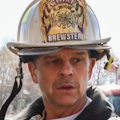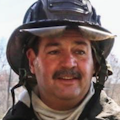First Due: Are You Prepared to Make the Call?
It’s no secret that the number of structure fires continues to head downward and that responses to activated alarms, service calls and emergency medical events have risen steadily. These facts bring up a valid, thought-provoking and debatable point: Are today’s fire officers (and those who sit in the front right seat) prepared to make the fast-moving, sound and effective fireground decisions that are necessary on arrival at a working fire?
Regardless of the level of training, knowledge and experience that you gained in your career, when you arrive as the first-due officer or as part of a first-arriving unit at a structure fire, there are several critical fireground command decisions that must be made in what we know is a time-limited, stressful and high-risk environment. You will be tested, and you will need to act.
The challenge
Without question, there is no substitute for the decision-making experience and situational-awareness skills that are gained by arriving first due or by standing at a command post as the incident commander. The value of acquiring this knowledge in these situations is immeasurable.
Conversely, we also know that there are many new officers and firefighters who never had the opportunity to work in this environment and obtain the practical experience, competence, and skills that are required to become a proficient and confident fireground commander.
Several decision-making models are available to both experienced and inexperienced firefighters that allow them to successfully meet the challenges that are encountered as a first-due officer or on a first-arriving unit. However, we find the following two to be both applicable and effective in a variety of situations.
Classical decision-making
Use of this model is appropriate for individuals who have limited fireground experience, training and knowledge or when timing isn’t a critical factor. It also can be used when firefighters are presented with an incident with which they have no prior experience. It’s a practical, commonsense, step-by-step process that uses built-in systems, such as preplanning information and the methodical COAL WAS WEALTH size-up process, as guides to gather the intelligence that’s necessary to develop and implement a well-thought-out, safe and rational incident action plan.
One of the best advantages of classical decision-making is that the skill set that’s required can be learned and practiced in a classroom, via a simulation and at table-top settings. This gives departments the opportunity to proactively train their less-experienced members and new officers on the knowledge, skills and abilities that are required to make successful decisions.
Cue-based decision-making
Gary Klein’s research on fireground decision-making generated the recognition-primed decision model. We prefer using the term “cue-based,” because the process is based on the first-arriving officer’s or unit’s ability to analyze size-up cues, stored patterns or responses and recognizable indicators from a like incident and then intuitively use that experience to generate, evaluate, and apply strategic and tactical options that are relevant to the incident that’s at hand.
Personnel who use this approach possess outstanding situational awareness and are well-trained and experienced firefighters and officers who, throughout their career, developed the base of habits and command confidence that allows them to make reliable and effective strategic and tactical decisions in demanding, time-limited situations.
Make a decision
The fireground is a dynamic, fast-paced and hazardous environment where most, if not all, strategic and tactical-based decisions are made in no more than a minute. These first-arriving choices set the operational foundation for the incident and noticeably affect each subsequent decision that’s made.
The key takeaway here is that, regardless of the method of decision-making that’s used, a decision must be made. Indecisiveness, uncertainty and hesitation are unacceptable and can lead to poor fireground management and reduced levels of victim survivability and firefighter safety.
Officers and firefighters who arrive first due must quickly collect essential incident information through the performance of a 360-degree size-up and then, based on this intelligence, implement the decision-making model that best meets the needs of the incident and their individual fireground experience, training and expertise.
About the Author

Robert Moran
Robert Moran served as fire chief of the Brewster, MA, Fire Rescue Department from 2010–2024. Prior to that, he served 26 years with the Englewood, NJ, Fire Department, retiring in 2010 after 12 years as chief of department. Moran holds a master’s degree from Fairleigh Dickinson University, is a certified public manager, and has a Chief Fire Officer (CFO) designation from the Center for Public Safety Excellence. He serves as an adjunct instructor for Kean University and the New Jersey Division of Fire Safety and lectures at numerous regional and national fire service conferences. Along with his training partner, John Lewis, Moran writes the back page of the New York State Association of Fire Chiefs' Size-Up magazine and operates Jersey Guys Fire Service Training.

John J. Lewis
John J. Lewis is a retired lieutenant from the Passaic, NJ, Fire Department, formerly assigned as the training and safety officer. He remains active in fire service as a 20-plus-year instructor at the Bergen County, NJ, Fire Academy and as an adjunct instructor for Kean University/New Jersey Division of Fire Safety. Along with his partner, Robert Moran, Lewis has written and presented training programs throughout the country and co-authored many articles for fire service publications.
